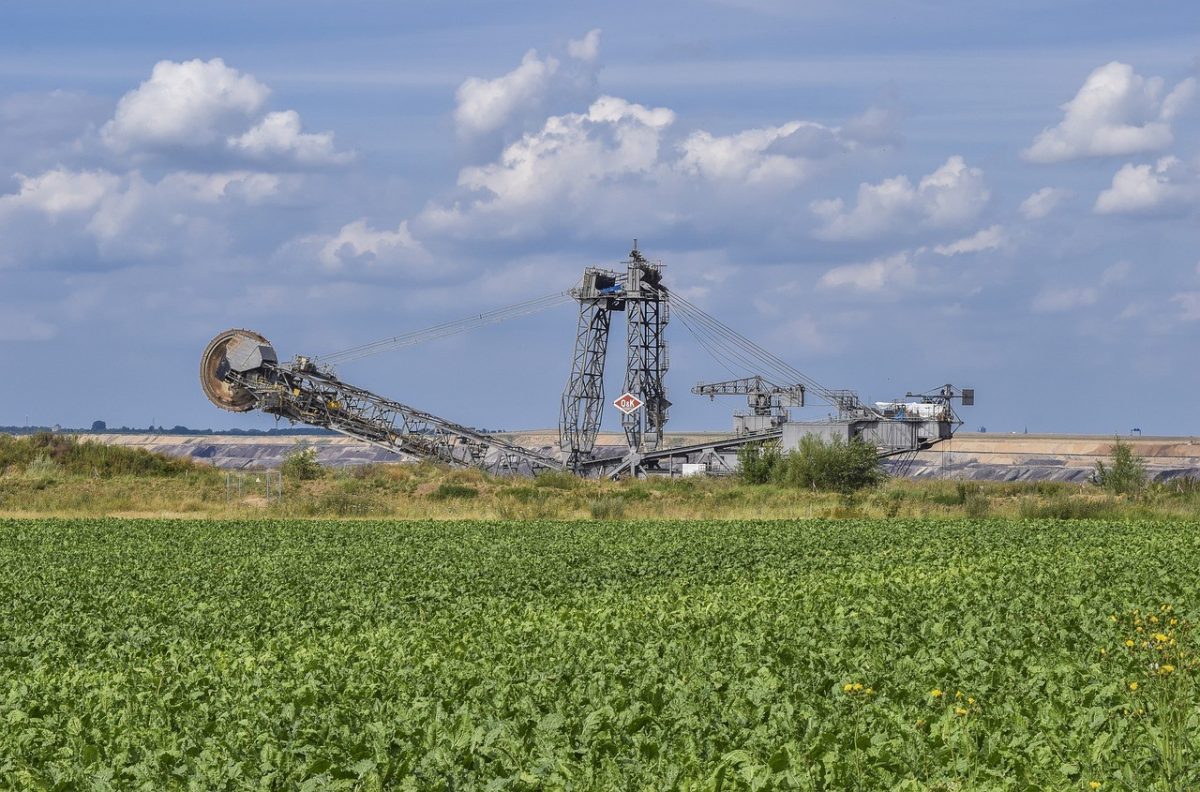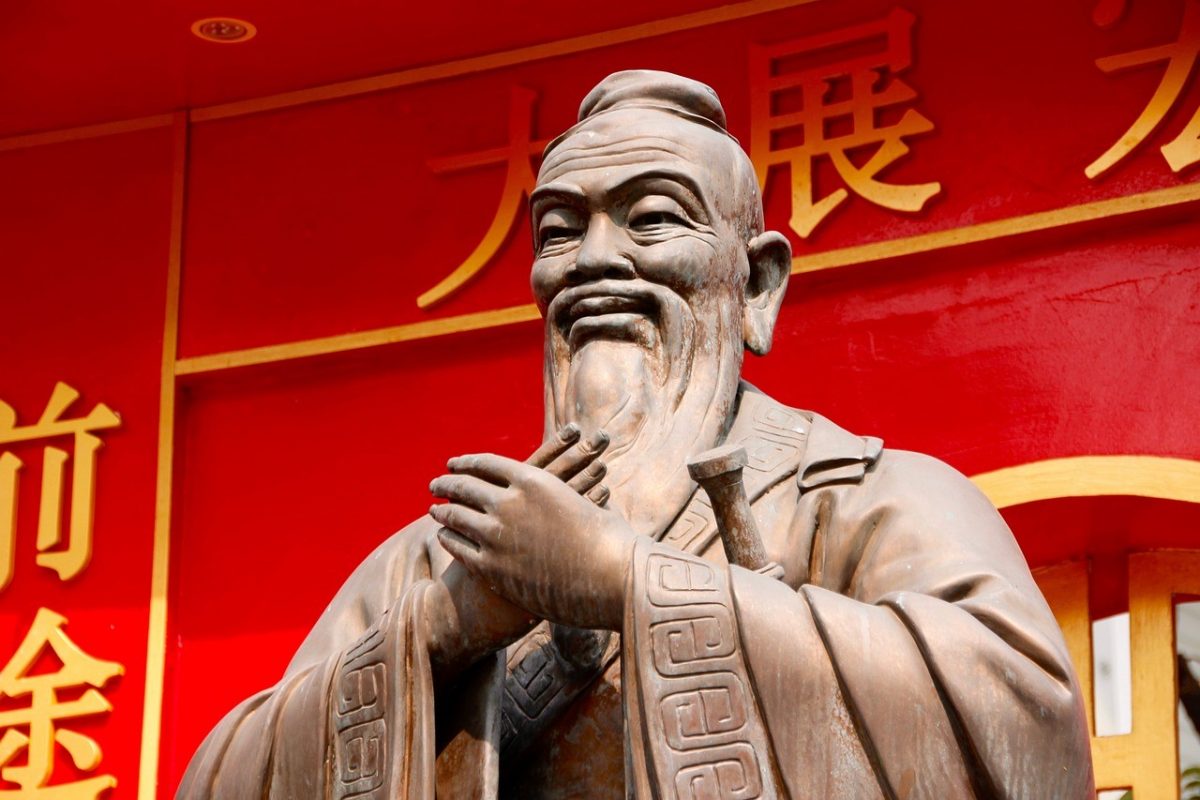The best in talk radio! Listen at https://drive.google.com/file/d/1mA_8r61EDkjGWgW7hpt1ALhDMOZQZXJx/view?ts=650b42a4
The Best Talk Radio!


The best in talk radio! Listen at https://drive.google.com/file/d/1mA_8r61EDkjGWgW7hpt1ALhDMOZQZXJx/view?ts=650b42a4

On this weeks program, political analyst Jeff Crouere explains why Biden is “China’s favorite president.” Also, is America on the verge of a “debt Bomb?” our guest Richard Vague has key insights. If you missed the show on TV, you can watch at https://rumble.com/v3jd7bs-the-american-political-zone-september-19-2023.html

Stories about the war in Ukraine overwhelm the few articles written about Russia’s troubles in Armenia. One week ago on September 13, Armenia’s Prime Minister Nikol Pashinyan, told the publication Asbarez that his country can no longer rely on Russia as a guarantor of its security. Few papers in the West covered the announcement outside of Radio Free Europe/Radio Liberty this week. Pashinyan’s statement is significant and follows the renewal of the heated conflict between Armenia and Azerbaijan, according to Emil Avdaliani of the Jamestown Foundation. Moscow’s influence in the South Caucasus is waning. The Central Asian states are developing their own identities and multi-faceted interests that do not include responding to the Kremlin’s disruptive influences.
Putin’s war in Ukraine forms the demarcation point. It is changing trade relations and the geopolitical balance across the Central Asian states that were under the influence of Russia since the early 1800’s. Even the breakup of the Soviet Union did not alter Moscow’s strong influence as the region’s dominant outside power. Ukraine has emerged as a “long war” for Russia. It is draining the country’s resources, setting its economy and trade routes back years, and making it into a pariah nation unwelcome in the many capitals around the world. Where Russia once easily used a heavy hand with neighboring states, it now threads lightly as it seeks to maintain its position in the world.
“Moscow has become ever-more unpredictable in its foreign policy,” says Avdaliani. He points out that Putin has been more patient recently, in particular, with Azerbaijan as Baku holds a key position in Russia’s plan to expand the International North-South Transport Corridor (INSTC). In June, Yunis Sharifli wrote in the Eurasia Daily monitor that “The INSTC is a multi-modal network of shipping, rail and road routes for moving freight between India, Iran, Azerbaijan, Russia, Central Asia and Europe. As two of the most sanctioned countries in the world, both Russia and Iran are interested in finding alternative routes to diversify their export and import routes as well as circumvent Western sanctions.” In the Armenian capital, officials suggest that it cannot rely on the Russia-led Collective Security Treaty Organization to keep peace in the region.
In Georgia, Putin’s pushed the government in Tbilisi to try to enact a Russian style “foreign agent” bill aimed at levying barriers to international organizations registering and trying to work inside Russia. Widespread protests stopped its passage from official consideration in March. When Russia attempted to resume direct flights to Tbilisi, massive protests erupted in Georgia in May despite the Georgian government’s support of the arrivals. According to analysts familiar with the region, Turkish influence in both Baku and Tbilisi is expanding and intensifying in recent months. Ankara, says Avdaliani, is emerging as a central player in the advancement of the Middle Corridor. This area is a strategic region linking Asia and Europe. It runs through the Black Sea and eastern Turkey, connecting the Caspian Sea to Central Asia.
Iran is also becoming more active in the South Caucasus, further reducing Russia’s regional influence. Al Jazeera attributes the change to the regional power vacuum that developed at the end of the Second Karabakh War. It gave Tehran the ability to re-assert itself in Armenian affairs, while also providing Iran increased leverage with Azerbaijan in halting the further expansion of the Zangezur Corridor. This area is part of a strategic transportation route extending from Baku to Kars in eastern Turkey and passing through Armenian territory near the Iranian border. China is also making moves in the region and recently signed a strategic partnership agreement with Tbilisi to improve its access to Black Sea transit and trade. Beijing already was active in the construction of the strategic port of Anaklia in Georgia, among other infrastructure projects.
Russia is also losing prestige to Western states operating in Central Asia. The European Union (EU) is supporting Georgia’s European leanings and last December agreed to participate in a proposed project to run an electric cable along the bottom of the Black Sea, according to the EU. At the same time Brussels signed a new gas agreement with Azerbaijan and is now mediating the Armenian-Azerbaijani peace talks. With outside actors taking on more and important regional roles, Moscow’s once dominant influence is seen as dissipating not in the Central Asian states but also with its traditional allies like Armenia. As Russia vies for space in the now multi-aligned geopolitical space, and while in a weakened position, regional competition can be expected to expand to include serious challenges from China and Turkey. The impact of the war in Ukraine is being felt throughout the region and Putin is left with few choices about how to improve Moscow’s standing.
Daria Novak served in the U.S. State Dept.

Biden’s IRA is now shutting African countries out of supply chains for critical minerals, according to a Foreign Policy report. This follow s a move made in January, when Biden announced a 20-year moratorium on mining in Northern Minnesota.
The Western Congressional Caucus Chairman Dan Newhouse (WA-04) has been sharply critical, noting ““The United States is the number one consumer of critical minerals, yet it continues to rely on importing them from foreign sources—who often use slave labor to extract from the Earth. By trying to shut down domestic mining, the Biden Administration is forcing us to source these raw materials from countries with little to no environmental standards—many of whom are not our allies. is an attack on our way of life,” said Western Caucus Vice Chair Pete Stauber (MN-08). “Joe Biden banned mining in 225,000 acres of Minnesota’s Iron Range, and locked up development of taconite, copper, nickel, cobalt, platinum-group elements, and more. Unfortunately, this harm to our country and our future has become the norm, as this president’s goal is to put America last. Not even one month ago, Joe Biden signed an agreement to fund mining projects in Chinese-owned mines in the Congo, where over 40,000 children work as slaves in forced labor and inhumane conditions with no environmental protections. Meanwhile today’s mining ban nullifies a Project Labor Agreement with the local building and construction trade unions. America needs to develop our vast mineral wealth, right here at home, with high-wage, union protected jobs instead of continuing to send American taxpayer dollars to countries like the Congo that use child slave labor. The only winner here is China, as Joe Biden continues to hand our foreign adversaries every advantage possible. I can assure you that this administration, from the president to the Forest Service, to the Interior Department, will answer for the pain they elected to cause my constituents today.”
“If Democrats were serious about developing renewable energy sources and breaking China’s stranglehold on the global market, they would be flinging open the doors to responsible mineral development here in the U.S.,” said House Committee on Natural Resources Chairman and Western Caucus Vice Chair Bruce Westerman (AR-04). “We cannot have a future of renewable energy without minerals, period – not to mention their necessity to our defense systems, satellites, cellphones and virtually every other advanced technology. While Democrats play political ping pong with American industries, China and Russia are laughing straight to the bank. The administration’s decision to withdraw this mineral-rich area – blatantly targeting one of our country’s most promising mines – is short-sighted, foolish and completely unscientific. Unfortunately, President Biden doesn’t seem to mind if Minnesota mining communities and the entire American economy pay the price.”
The U.S. Energy Information Administration notes that The market for minerals that help power electric vehicles, wind turbines, solar panels and other technologies key to the clean energy transition has doubled in size over the past five years, according to a new report by the International Energy Agency.
Media reports have sharply criticized the White House policy. In March, the New York Post noted that “President Joe Biden claims he wants America to lead in “clean energy” production, but he’s again blocking American producers from developing the critical, rare-earth minerals to make it happen…The federal government owns huge chunks of America’s West, home to critical minerals like lithium essential to technologies like electric-vehicle batteries — yet Biden blocks their development beneath federal lands.”
Earlier this year, a furious Senator John Barrasso (R-Wyoming) noted how Biden’s energy policy has helped China while harming America. “Time and again, Joe Biden’s energy policies have hurt America and have helped China. On Joe Biden’s first day in office, he shut down the Keystone XL Pipeline, and I think he did it for spite. “It would have brought 800,000 barrels of oil to this country every single day. “Joe Biden then stopped all new energy leases on federal land, and in Wyoming we have a lot of federal land. “He did it in a way that was blatantly illegal. A federal judge actually ordered Joe Biden to follow the law, to sell energy leases. Follow the law.”
Oliver Mcpherson-Smith, writing for The Hill, summarizes the issue succinctly: “President Joe Biden prioritizes fossil fuel extraction in foreign dictatorships rather than on American shores. Unfortunately, this energy NIMBY-ism isn’t limited to the oil and gas industries. Recently released data reveals how the president’s opposition to domestic mining maintains China’s supply chain domination of the critical minerals needed for renewable energy technology.”
Photo: Pixabay

According to a deeply troubling study by Parents Defending Education American education at all levels is still being deeply influenced by Communist China.
The report, entitled Little Red Classrooms, follows up on 2022 research from the National Association of Scholars
Confucius Institutes, funded with $10 billion from Beijing, essentially spread pro-China propaganda. Since 2004, the Chinese government planted about 100 Confucius Institutes in the United States. “These Institutes avoid Chinese political history and human rights abuses, portray Taiwan and Tibet as undisputed territories of China, and educate a generation of American students to know nothing more of China than the regime’s official history. “
The reality that Confucius Institutes and Beijing’s other efforts to influence American youth are propaganda efforts was outlined in a report by a Senate Permanent Subcommittee on Investigations analysis. “Confucius Institute funding comes with strings that can compromise academic freedom. The Chinese government approves all teachers, events, and speakers. Some U.S. schools contractually agree that both Chinese and U.S. laws will apply. The Chinese teachers sign contracts with the Chinese government pledging they will not damage the national interests of China. Such limitations attempt to export China’s censorship of political debate and prevent discussion of potentially politically sensitive topics. Indeed, U.S. school officials told the Subcommittee that Confucius Institutes were not the place to discuss controversial topics like the independence of Taiwan or the Tiananmen Square massacre in 1989. As one U.S. school administrator explained to the Subcommittee, when something is ‘funded by the Chinese government, you know what you’re getting.’”
After outrage from the U.S. public, many of these sites were forced to close. But Parents Defending Education has uncovered contracts that show Confucius Classrooms, or other Chinese government backed programing, are still in operation at a variety of sites. It was found that:Three of the nation’s top science and technology high schools have ties to Chinese government affiliated programs.
In March, Parents Defending Education uncovered that a nonprofit linked to a major tech school had received more than $1 million in financial aid from Chinese government-affiliated entities over the course of a decade. Further research reveals the People’s Republic of China fostered relationships with American K-12 schools through grants, sister school partnerships, and other programming since at least 2009. Parents Defending Education tracked affiliations in 143 schools across 34 states and Washington, D.C.—and at least seven are still active. Financial exchanges between K-12 schools and the Chinese government range from a few thousand dollars to, more than a million dollars. Disturbingly, the Chinese government’s ties appear to target school districts near 20 American military bases.
The National Association of Scholars reports that the demise of Confucius Institutes (CIs), one of China’s most strategic beachheads in American higher education, has not deterred the Chinese government from seeking alternative means of influencing American colleges and universities. It has used an all-of-the-above approach to protecting its spheres of influence on American higher education, ranging from full-throated defenses of Confucius Institutes to threats. Among its most successful tactics, however, has been the effort to rebrand Confucius Institute-like programs under other names.
Many once-defunct Confucius Institutes have since reappeared in other forms. 28 institutions have replaced (and 12 have sought to replace) their closed Confucius Institute with a similar program. 58 have maintained (and 5 may have maintained) close relationships with their former CI partner. 5 have (and 3 may have) transferred their Confucius Institute to a new host, thereby keeping the CI alive. The single most popular reason institutions give when they close a CI is to replace it with a new Chinese partnership program. Institutions have entered new sister university agreements with Chinese universities, established “new” centers closely modeled on defunct Confucius Institutes, and even continued to receive funding from the same Chinese government agencies that funded the Confucius Institutes.
Photo: Pixabay

The evidence that the nation’s government officials are extensively separate from the concerns of the American people grows larger each day.
Review just a few recent examples.
New York State is in a rapid downward spiral. Stunning levels of crime, outrageous taxes, failing schools and a regulatory environment that destroys jobs and businesses large and small besiege the remaining residents of what was once known as the Empire State. But you wouldn’t know that from the early 2023 actions of its government. Facing a myriad of very real challenges, what did legislatures work on? Well, they gave themselves a pay raise. They followed up that nonsense with a provision to approve human composting. According to a published source, “The practice is formally referred to as ‘natural organic reduction’ and is seen as a more environmentally friendly alternative to more traditional burials. New York is the sixth state to legalize human composting since 2019. The green burial process was legalized by Governor Kathy Hochul.”
Legislators got a raise and they use your body for composting. That solves everything, doesn’t it? That certainly explains the mass exodus from New York (those who follow science fiction movies will probably prefer the phrase “Escape from New York,” a 1981 flick starring Kurt Russell.)
Spectrum News reports that New York continues to lead the country in population loss and outmigration, according to data released Thursday by the U.S. Census Bureau. The Empire State saw the largest annual numeric and percent decline in its population between July 2021 and July 2022, dropping by 180,341 people. Overall, that’s a 0.9% decrease in people living in New York, the bureau reported. Net domestic migration accounted for much of the decline in the state’s population, with New York losing 299,557 to other states. New York in the last two years has seen a sharp drop in its population, losing more than 400,000 people during that time.”
New York is not alone. As California contends with brownouts because they can’t produce enough electricity, and people across the once-golden state struggle to pay massively increased energy bills, the progressive legislature and governor are seeking to replace less costly natural gas with hyper-costly electricity. Claims that some uses of natural gas, such as that used for cooking, cause health problems are sheer nonsense, disproven by the simplest reviews of the ridiculous claims. The same culprits want to eliminate gas-driven cars, as well.
KTLA reports that The (California) “state’s population…continues to decline, according to the latest data from the U.S. Census Bureau. Figures released …showed California’s resident population at 39,029,342 in July 2022, a decline of more than 113-thousand since July 2021 and down more than a half-million people since July 2020.”
At first glance, engaging in actions that chase your population away, or that ignore real needs like crime control, inflation and runaway taxes, appear to be exceptionally absurd. Are these actions the results of ignorant leaders in Sacramento and Albany? To understand their bizarre decisions, you have to understand their actual goals. Those plans have nothing to do with the environment, public health, or safety. They have everything to do with control. The distribution of electricity is a far easier action to control than other energy sources. If everyone, every business, every vehicle is wholly dependent on electricity, which can be limited at the flick of a few switches, big government has massive influence in every decision about everything. If starting or running a business is too expensive to engage in, then you must depend on government for your survival.
While families contend with trying to pay higher bills and avoid being victimized by the criminals government elites let out onto the street thanks to lax law enforcement and the growing strength of criminal cartels let into America through Biden’s open southern border, Progressive officials and their media lackeys ignore those concerns. They distract from it with overblown environmental allegations, and a whole litany of grievance issues that serve only to alienate different segments of the population from one another, a divide and conquer technique that strengthens their hand even further.
Illustration: Pixabay

The best in talk radio! Listen here https://drive.google.com/file/d/169utSewPXkv5bPM1CxCJPtqj2CWstL1Q/view?ts=65021101

Are presidential debate moderators, and audiences, be abolished? Find out on this week’s program at https://rumble.com/v3hg17u-the-american-political-zone-september-12-2023.html

Russian war dead in Ukraine likely exceed 300,000 according to US officials, with another 180,000 wounded in the war. Those estimates dwarf Ukrainian losses, which are estimated to be 70,000 killed with slightly more than 100,000 wounded. Although Russia’s uniformed military including the Wagner group mercenary force is almost three times larger than Ukraine’s 1.3 million soldiers, Putin is being forced to recruit heavily in Central Asia to fill the ranks. It is becoming more challenging for Russia to recruit in Kyrgyzstan as it is illegal for their citizens to participate in the armed hostilities as a mercenary serving Russia. Although that does not bode well for the Kremlin, Putin is pushing back against the Central Asian elites balking about supplying men for his war.
Kyrgyzstan’s Supreme Court on August 30 held a criminal hearing in the case against one of its national’s, Askara Kubanychbek-uulu. He was detained by the country’s State Committee for National Security in January 2023 and in May sentenced to 10 years for participating in the Ukraine war, before the case was revisited and a new trial set. Nurbek Bekmurzaev, of the Jamestown Foundation, says that in June 2022 Kubanychbek-uulu signed a contract with the “armed forces” of the so-called Luhansk “people’s republic” to obtain Russian citizenship.
The Russian publication RT on July 19 reported that he requested the Kremlin grant him a Russian passport and extricate him from prison. This marks what appears to be the first case of a Central Asian citizen convicted for participating illegally in the war in Ukraine on behalf of Russia. Analysts expect there will be additional cases. Despite Central Asian states attempting to discourage participation as mercenaries, Russia is continuing to step up its efforts to recruit as its domestic efforts falter.
According to Kaktus Media, Kirill Kabanov, a member of the Russian Presidential Council for the Development of Civil Society and Human Rights, promised to speed the passport process for Kubanychbek-uulu, stating that Russia “is obliged to use all possible pressure mechanisms in response to clearly unfriendly actions on the part of the Kyrgyz authorities.” Putin needs to reinforce his armed forces and cannot afford the Central Asian courts to discourage recruits. After the initial ruling Moscow started exerting pressure on Bishkek to drop the charges. Both the Russian Ministry of Foreign Affairs and the Ministry of Interior were involved in the operation to free Kubanychbek-uulu.
Central Asian migrants, notes Bekmurzaev, “present a large pool of potential recruits and allow the Kremlin to avoid having to mobilize ethnic Russians in its city centers. If the Kremlin is to succeed with these recruitment efforts, it cannot ignore such cases as Kubanychbek-uulu’s and leave Central Asians who fought on the Russian side rotting in prison in their home countries.” C. Krishnasai, writing in WION on September 4, says that since late June “Russian miliary reportedly put up military advertisements targeting Armenian and Kazakhstani migrants, offering down payments of 45,000 rubles, equivalent to about US $5,140 and staring salaries of 190,000 rubles, or US $1,973 dollars.”
Krishnasai adds that the UK Ministry of Defense reports that there are upwards of 6 million Central Asian migrants inside the Russian Federation, all of whom are “potential recruits” in the Kremlin’s eyes. As of May 2022, there were 3.35 million labor migrants, according to a Russian Presidential Academy of National Economy and Public Administration analysis publish in June 2022, entitled, “Monitoring the Economic Situation in Russia: Tendencies and Challenges of Socio-economic Development.” Eighty-three percent of the migrants arrived from Central Asia and work in the service and construction industries on large infrastructure projects. It was a natural transition for them to enter the military sphere. The Jamestown Foundation reports that the first video evidence of Russian recruitment of Central Asians coincided with the first day of the war in Ukraine on February 24, 2022. It depicts an Uzbek male in uniform driving a truck in the Luhansk region of Ukraine. The video reported that many Tajiks and Uzbeks already had signed contracts to join the Russian invasion.
The Russian government as early as spring 2022 attempted to threaten Central Asians possessing Russian passports, which are required for working in Russia, with losing their citizenship if they failed to appear when summoned to Russian enlistment centers. Although it was not legally required, the intimidation appears pervasive. Those without Russian passports were promised one immediately upon their contract completion of military service. In addition to Moscow recruiting Central Asians, the Wagner Group also sought prisoners from the region and brought them to its training center in Molkino, Russia. The Asiaplus publication in Tajikistan reported last June that at least 93 Central Asian prisoners from Kyrgyzstan, Tajikistan, and Uzbekistan died while fighting in Ukraine.
As desperation seeps throughout the corridors of the Kremlin, it is likely Russian officials will increase their coercion of migrant workers to join the ranks of its military fighting in Ukraine. Earlier this month Uzbek nationals arriving in Mariupol as construction workers were tricked into fighting on the front lines in Ukraine after contract papers, they were required to sign, had a small section of the document designating them as military. With the 2024 Russian elections looming on the horizon, Putin cannot risk the widespread alienation of Russian voters. Bekmurzaev argues that a new verdict in Kubanychbek uulu’s case may expose just how desperate Putin is this fall and how weak the Central Asian elites are if they cave to Russia’s demands. The outcome of the war in Ukraine is far from decided.
Daria Novak served in the U.S. State Dept.
Photo: Pixabay

India’s population, military strength, and strategic geographical location render it one of the world’s most important nations. The implications for the United States, particularly in the dangerous challenges from China, are extraordinary.
Key Indian government officials met in Washington in early February to meet with their Pentagon counterparts and discuss the growing Indo-U.S. military relationship.
The Pentagon notes that “Over the past decade, the U.S.-India defense relationship has become indispensable in promoting peace, prosperity and stability in the Asia Pacific and Indian Ocean region.”
The State Department notes that “The U.S.-India strategic partnership is founded on shared values including a commitment to democracy and upholding the rules-based international system. The United States and India have shared interests in promoting global security, stability, and economic prosperity through trade, investment, and connectivity.”
India has consistently taken a nonaligned position in global affairs. However, as China’s aggressiveness has increased dramatically, it has been forced to face the reality that its security lies with western-aligned nations.
The U.S. Institute for Peace reports “On December 9, hundreds of Indian and Chinese forces clashed along the Line of Actual Control (LAC), the roughly 2,100 miles contested boundary that separates northern India from China … both Indian and Chinese forces sustained injuries. The skirmish was the worst since the summer of 2020, when deadly fighting in the Galwan Valley led to the most significant border escalation in over four decades. In the wake of those 2020 clashes, India and China held 17 rounds of military talks — but have been unable to reach terms for disengagement across key areas of the disputed border.”
According to American Military News, Japan and India held their first joint air drills in an area outside of Tokyo as both countries step up military exercises with other countries amid worries about China’s assertiveness.
Globaldata’s Abhijit Apsingikar, a Defense Analyst at that organization, writes: “Growing presence along the Himalayan frontier, cross-border incursions and increased naval activity in the Indian Ocean by China are a cause of concern to India’s strategic interests, and hence India has enhanced it’s defense budget.”
Earlier this year, the White House notes, President Biden and Prime Minister Modi announced the U.S.-India initiative on Critical and Emerging Technology (iCET) in May 2022 to elevate and expand the strategic technology partnership and defense industrial cooperation between the governments, businesses, and academic institutions of the two countries. The two negotiations agreed to Develop a new bilateral Defense Industrial Cooperation Roadmap to accelerate technological cooperation between both countries for the joint development and production, with an initial focus on exploring projects related to jet engines, munition related technologies, and other systems. The U.S. has received an application from General Electric to jointly produce jet engines that could power jet aircraft operated and produced indigenously by India. The United States committed to an expeditious review of this application. They also agreed to enhance long-term research and development cooperation, with a focus on identifying maritime security and intelligence surveillance reconnaissance (ISR) operational use cases. Additionally, an “innovation bridge” will be launched to connect U.S. and Indian defense startups.
While India has recognized the common threat it faces from China with the U.S., it remains “nonaligned” in other international matters.
The Council on Foreign Relations notes that “New Delhi does not want to ruin its historical ties to Moscow, which is also a significant source of military equipment. (Over 70% of India’s military hardware comes from Russia, and last year, Russia delivered to India S-400 air defense systems.) But India also knows that it needs new international partners. And over the last two decades, it has found one in Washington.”
Illustration: Pixabay